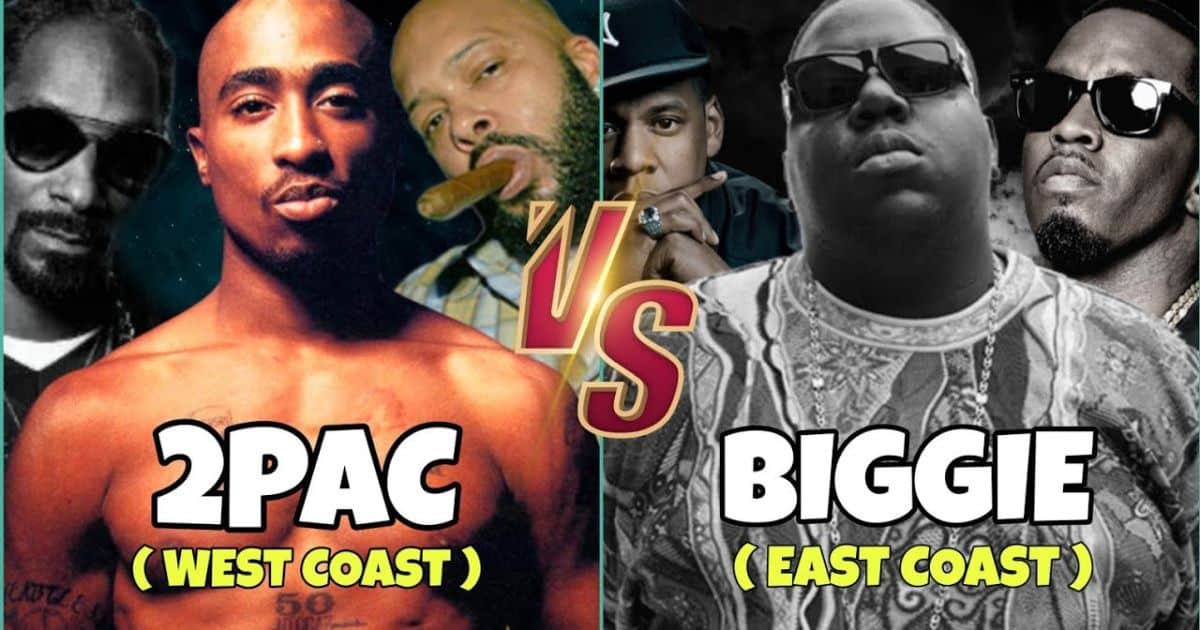In the mid-1990s, the music industry witnessed one of the most notorious and tragic feuds in its history – the East Coast vs. West Coast rivalry. At the center of this bitter conflict were two influential figures, Tupac Shakur and The Notorious B.I.G., who became the faces of their respective coasts. This intense clash of cultures not only polarized the hip-hop community but also captivated the entire nation. But what fueled this rivalry? What were the underlying tensions that escalated into violence and ultimately claimed the lives of these two iconic artists?
Delve into the captivating story behind the East Coast vs. West Coast feud, as we unravel the complex web of personal conflicts, territorial disputes, and industry politics that shaped this tumultuous chapter in music history. From their early collaborations and friendship to the explosive diss tracks and tragic consequences, this article will explore the dramatic events and underlying factors that propelled this feud to legendary status.
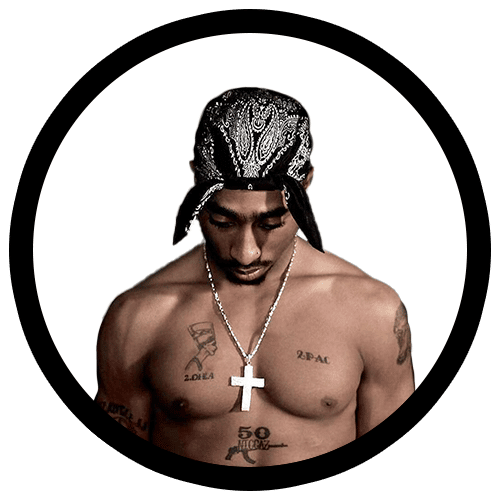
Tupac Clothing & Merchandise
Show your respect for one of the greatest legends in hip-hop: 2Pac. Get ready to step up your style game with a stunning range of Tupac Amaru Shakur merchandise, from vintage t-shirts and baseball jerseys to unique bomber jackets! Don’t miss this opportunity – honor his legacy by sporting some must-have Makaveli apparel at unbeatable prices. Hustle those streets like Pac and look the hottest in town – grab yours now!
The rise of Tupac Shakur and his influence on hip hop
Tupac Shakur, born in East Harlem, New York City, rose to prominence in the early 1990s as one of the most talented and charismatic hip-hop artists of his generation. With his poetic lyrics, powerful delivery, and raw authenticity, Tupac quickly became a force to be reckoned with in the music industry. His influence extended beyond his music, as he championed social justice issues and tackled topics such as racism, poverty, and police brutality. Tupac’s rise to stardom coincided with the emergence of the West Coast hip-hop scene, which was gaining momentum and challenging the dominance of the East Coast.
However, Tupac’s success was not without controversy. He found himself entangled in legal troubles, including assault charges, which further fueled the media’s fascination with his persona. Despite these challenges, Tupac’s impact on hip hop and popular culture cannot be overstated. He became an emblematic figure for the struggles faced by African Americans and a symbol of empowerment for the marginalized communities he represented.
Tupac’s influence and popularity set the stage for a clash of epic proportions – the East Coast vs. West Coast feud.
The origins of the East Coast vs. West Coast feud
The roots of the East Coast vs. West Coast feud can be traced back to the early days of hip hop. New York City, specifically the borough of Bronx, is widely regarded as the birthplace of hip hop, with iconic artists such as Grandmaster Flash and the Furious Five, Afrika Bambaataa, and Run-DMC pioneering the genre. The East Coast hip-hop scene flourished in the 1980s and early 1990s, establishing itself as the epicenter of rap music and culture.
Meanwhile, on the opposite coast, a new wave of artists was emerging in Los Angeles. Dr. Dre, Ice Cube, and Eazy-E formed N.W.A., a group that would revolutionize West Coast hip hop and give birth to the genre known as gangsta rap. The West Coast sound was characterized by its heavy bass, laid-back vibe, and gritty lyrics that reflected the realities of life in the inner cities.
As these two distinct hip-hop scenes developed, a sense of competition and rivalry began to brew. Artists from each coast took pride in their respective styles and often engaged in friendly banter, seeking to claim their dominance over the rap game. However, it wasn’t until the arrival of Tupac Shakur on the West Coast scene that the rivalry escalated into something much more sinister.
The role of media in fueling the rivalry
The media played a significant role in fueling the East Coast vs. West Coast feud, turning it into a sensationalized spectacle that captivated audiences across the nation. As the popularity of hip hop grew, so did the media’s obsession with the conflicts and controversies surrounding the genre. News outlets, music magazines, and tabloids eagerly covered every twist and turn of the feud, elevating it to a level of notoriety that extended beyond the music industry.
The media’s coverage often fueled the flames of the rivalry, amplifying the tensions and turning them into headline news. The East Coast vs. West Coast narrative became a marketing tool for record labels, as they capitalized on the controversy to generate buzz and drive album sales. Sensationalized headlines, provocative interviews, and exaggerated stories fueled the public’s fascination with the feud, creating a climate of hostility and animosity between the two coasts.
It is important to acknowledge the media’s role in perpetuating stereotypes and reinforcing the narrative of a divided hip-hop community. While the rivalry had its roots in personal conflicts and territorial disputes, the media’s portrayal often oversimplified the complexities of the situation, painting a picture of an industry torn apart by geographical loyalties.
-
 Cool Tupac Shakur Timberland Design Zip Up Hoodie
Cool Tupac Shakur Timberland Design Zip Up Hoodie -
 Tupac Makaveli Shakur Iconic Timberland Hoodie
Tupac Makaveli Shakur Iconic Timberland Hoodie -
 Hip Hop Gangsta Rapper 2Pac Amaru Shakur LA Dope Baseball Jersey
Hip Hop Gangsta Rapper 2Pac Amaru Shakur LA Dope Baseball Jersey -
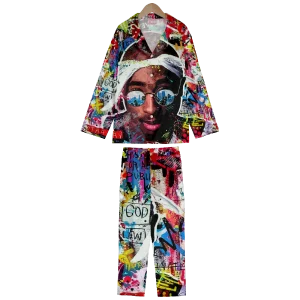 Rap Icon Tupac Multicolor Graffiti Art Pyjamas Set
Rap Icon Tupac Multicolor Graffiti Art Pyjamas Set -
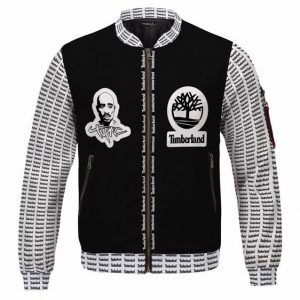 Timberland Logo Tupac Amaru Shakur Dope Varsity Jacket
Timberland Logo Tupac Amaru Shakur Dope Varsity Jacket -
 Dope 2Pac Shakur Portrait Notorious Black Pajamas Set
Dope 2Pac Shakur Portrait Notorious Black Pajamas Set -
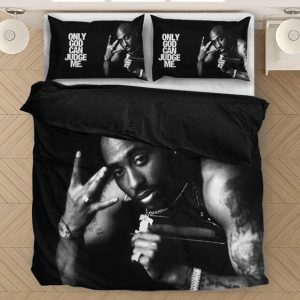 2pac Shakur Only God Can Judge Me West Side Dope Bedding Set
2pac Shakur Only God Can Judge Me West Side Dope Bedding Set -
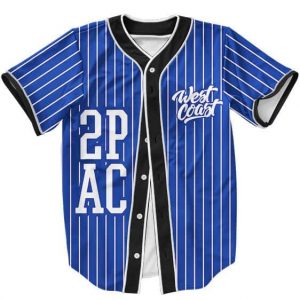 2Pac Shakur White on Blue West Coast Hip Hop Baseball Jersey
2Pac Shakur White on Blue West Coast Hip Hop Baseball Jersey -
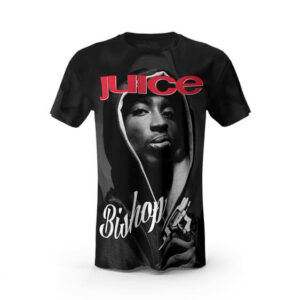 Juice Bishop Power & Respect 2Pac Graphic Tee
Juice Bishop Power & Respect 2Pac Graphic Tee
The infamous Tupac vs. Biggie Smalls feud
At the heart of the East Coast vs. West Coast feud was the highly publicized conflict between Tupac Shakur and The Notorious B.I.G., also known as Biggie Smalls. What started as a friendship and collaboration between two rising stars quickly turned into a bitter rivalry that would have devastating consequences.
Tupac and Biggie’s relationship began to sour when Tupac was shot multiple times in a recording studio in 1994. Believing that Biggie and his associates were involved in the attack, Tupac fueled the feud by publicly accusing them in interviews and diss tracks. In response, Biggie denied any involvement and maintained his innocence, but the damage was done. The feud intensified as both artists released a series of diss tracks aimed at each other, escalating the tension and putting their respective coasts on high alert.
The feud reached its boiling point in 1996 when Tupac was fatally shot in Las Vegas. His murder remains unsolved, but it sent shockwaves throughout the music industry and further deepened the divide between the East Coast and West Coast factions. Just six months later, Biggie Smalls met the same tragic fate, gunned down in Los Angeles. The deaths of these two young and talented artists shocked the world and forever cemented their place in music history.
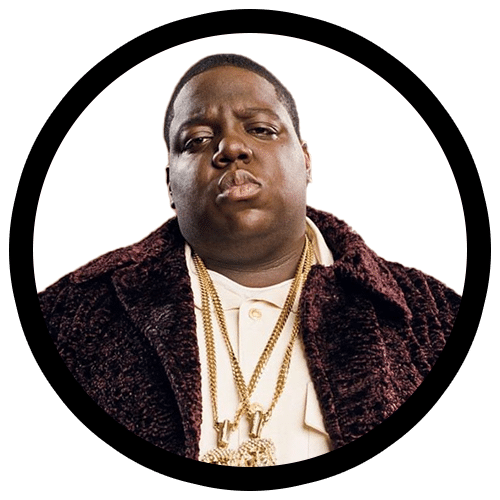
Biggie Smalls Clothing & Merchandise
Give your wardrobe a taste of ’90s hip-hop with the most extensive collection of Notorious B.I.G.’s clothing and merchandise online! From vintage t-shirts to stylish hoodies and comfy sweatshirts, you will have no shortage when it comes to showing love for Biggie Smalls – East Coast’s greatest rapper! And if that wasn’t enough, check out exclusive bomber jackets featuring The King himself. Get these unique items now before they’re gone forever… show off your swag with some iconic rap apparel today!
The tragic deaths of Tupac and Biggie and their impact on the rivalry
The deaths of Tupac Shakur and The Notorious B.I.G. sent shockwaves through the hip-hop community and had a profound impact on the East Coast vs. West Coast rivalry. The senseless violence and tragic loss of these two iconic artists forced the industry to confront the consequences of the feud and its toll on the culture they held dear.
The deaths of Tupac and Biggie were not only a tremendous loss for their families and friends but also a blow to the hip-hop community as a whole. These young artists had the potential to shape the future of rap music and contribute to the evolution of the genre. Instead, their lives were cut short, leaving behind a void that would never be filled.
The murders of Tupac and Biggie served as a wake-up call for the music industry, forcing artists, record labels, and fans to reflect on the toxic nature of the rivalry. The violence that had once been glorified now became a stark reminder of the consequences of unchecked animosity. The tragedy prompted soul-searching within the hip-hop community and sparked a movement towards unity and collaboration, as artists sought to honor the legacies of Tupac and Biggie by promoting peace and understanding.
The aftermath and legacy of the East Coast vs. West Coast feud
The East Coast vs. West Coast feud left an indelible mark on the music industry and continues to shape the culture of hip hop to this day. The rivalry exposed the fault lines within the community and highlighted the need for unity and solidarity. In the aftermath of the tragic deaths of Tupac and Biggie, artists and fans came together to mourn, reflect, and seek a way forward.
The legacy of the feud can be seen in the ongoing debates and discussions surrounding the events that unfolded. Conspiracy theories, unanswered questions, and conflicting narratives persist, keeping the memory of Tupac, Biggie, and the feud alive in popular culture. The East Coast vs. West Coast rivalry serves as a cautionary tale, reminding us of the dangers of unchecked competition, ego, and violence.
Ultimately, the feud taught the music industry valuable lessons about the destructive power of division and the importance of fostering a sense of community. It spurred a cultural shift, leading to a greater emphasis on collaboration, inclusivity, and social responsibility within the hip-hop community. The story of Tupac Shakur, The Notorious B.I.G., and the East Coast vs. West Coast feud serves as a reminder of the complex and often tragic nature of music history and the lessons we can learn from it.
The cultural impact and influence of Tupac and the rivalry on hip hop
Tupac Shakur’s influence on hip hop and popular culture cannot be overstated. His music, poetry, and activism continue to resonate with audiences around the world. Tupac’s ability to convey the struggles and aspirations of his community through his lyrics made him an icon of authenticity and empowerment. His impact transcended the boundaries of music, inspiring a generation of artists to use their platform for social change.
The East Coast vs. West Coast rivalry, while marked by tragedy, also had a lasting cultural impact on hip hop. The feud brought attention to the regional differences within the genre and gave rise to a sense of pride and identity for artists and fans alike. It sparked a renewed interest in the distinct sounds, styles, and perspectives of the East Coast and West Coast scenes, leading to a proliferation of regional rap movements across the country.
The influence of Tupac and the East Coast vs. West Coast rivalry can still be felt today, as artists continue to draw inspiration from their legacies. The feud remains a touchstone for discussions on hip-hop culture, artistic integrity, and the power dynamics within the music industry. It serves as a reminder of the enduring impact that artists can have on society and the responsibility they carry to use their voices for positive change.
The ongoing debates and theories surrounding the feud
Decades after the East Coast vs. West Coast feud, the events and circumstances surrounding the conflict continue to generate debates, theories, and speculation. The unanswered questions and unsolved mysteries surrounding the murders of Tupac and Biggie have fueled a cottage industry of conspiracy theories and investigations.
One of the most enduring theories is that the feud was not simply a result of personal conflicts and rivalries, but rather a larger conspiracy involving powerful figures within the music industry, law enforcement, and even government agencies. This theory suggests that Tupac and Biggie’s deaths were orchestrated to silence their voices and maintain control over the direction of hip hop.
While these theories remain largely speculative, they underscore the enduring fascination with the East Coast vs. West Coast feud and the desire for closure and justice. The ongoing debates serve as a reminder of the unresolved nature of the conflict and the lingering impact it continues to have on the collective memory of the hip-hop community.
-
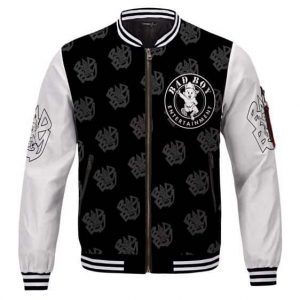 Bad Boy Entertainment Logo Pattern Black Varsity Jacket
Bad Boy Entertainment Logo Pattern Black Varsity Jacket -
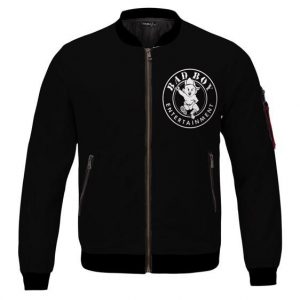 Biggie Bad Boy Entertainment Logo Black Bomber Jacket
Biggie Bad Boy Entertainment Logo Black Bomber Jacket -
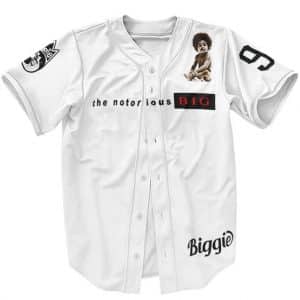 The Notorious BIG Ready To Die Album Cover Art White Baseball Jersey
The Notorious BIG Ready To Die Album Cover Art White Baseball Jersey -
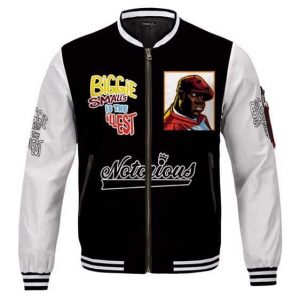 Notorious Biggie Smalls Is The Illest Bad Boy Varsity Jacket
Notorious Biggie Smalls Is The Illest Bad Boy Varsity Jacket -
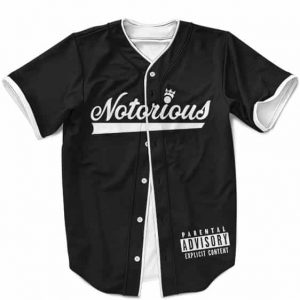 Big Poppa Notorious BIG 1972 Birthyear Clean Black Dope Baseball Uniform
Big Poppa Notorious BIG 1972 Birthyear Clean Black Dope Baseball Uniform -
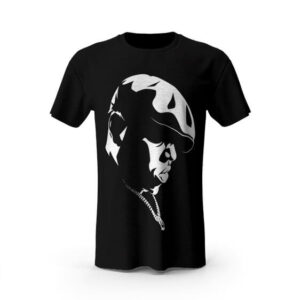 Face Silhouette Biggie Smalls Crown Logo T-Shirt
Face Silhouette Biggie Smalls Crown Logo T-Shirt -
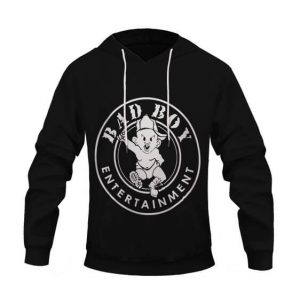 Bad Boy Entertainment Records Logo Black Pullover Hoodie
Bad Boy Entertainment Records Logo Black Pullover Hoodie -
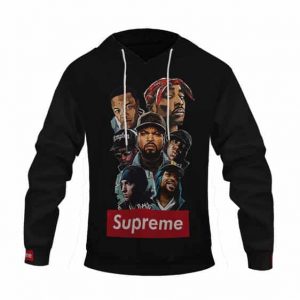 Iconic 90s Rappers Supreme Artwork Epic Pullover Hoodie
Iconic 90s Rappers Supreme Artwork Epic Pullover Hoodie -
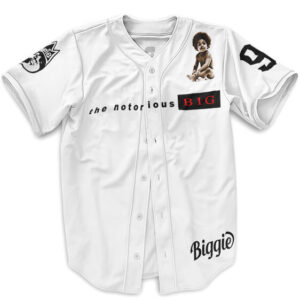 The Notorious BIG Ready To Die 1993 Baseball Jersey
The Notorious BIG Ready To Die 1993 Baseball Jersey
Conclusion and lessons learned from the East Coast vs. West Coast rivalry
The East Coast vs. West Coast feud between Tupac Shakur and The Notorious B.I.G. was a tragic chapter in music history that forever changed the landscape of hip hop. The intense rivalry, fueled by personal conflicts, territorial disputes, and industry politics, captivated the nation and polarized the hip-hop community.
The feud serves as a cautionary tale, reminding us of the destructive power of division, ego, and violence. The tragic deaths of Tupac and Biggie forced the music industry to confront the consequences of the feud and prompted a movement towards unity and collaboration.
The story of Tupac, Biggie, and the East Coast vs. West Coast rivalry continues to resonate with audiences, inspiring discussions on hip-hop culture, artistic integrity, and the responsibility of artists to use their voices for positive change. It serves as a reminder of the complex and often tragic nature of music history and the lessons we can learn from it.
As we reflect on the legacy of the East Coast vs. West Coast feud, let us strive to foster a sense of community, promote unity, and use our collective voices to create positive change in the world. Only by embracing collaboration and seeking common ground can we truly honor the legacies of Tupac Shakur, The Notorious B.I.G., and the countless others who have left an indelible mark on the culture of hip hop.

